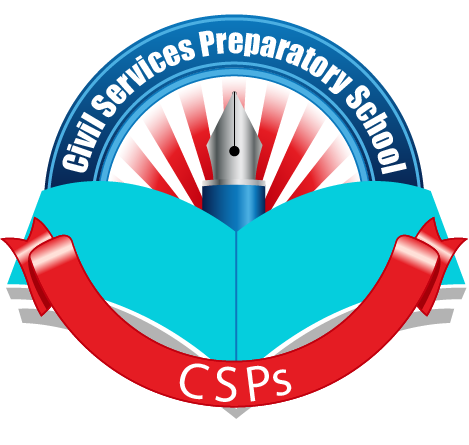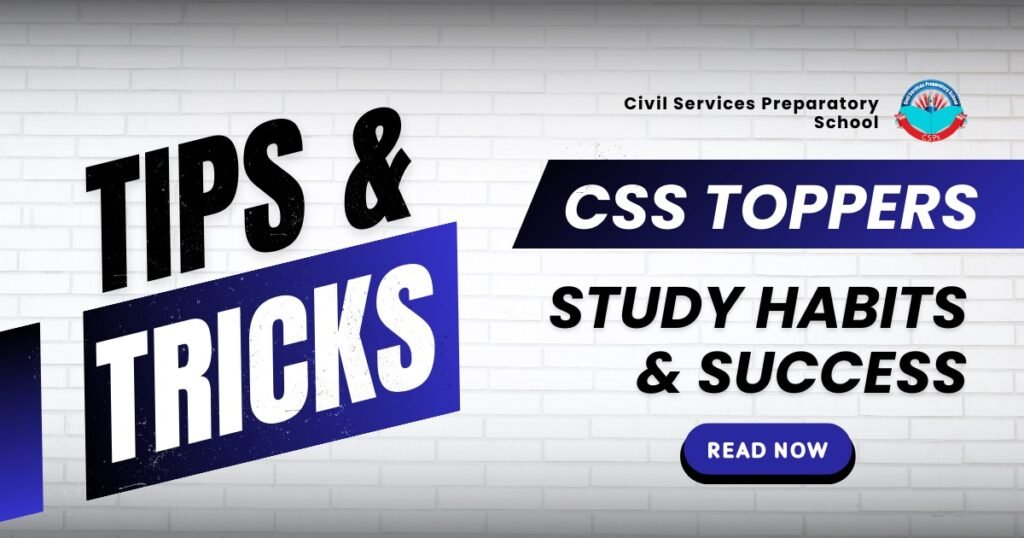CSS and PMS Toppers’ Study Habits & Success Tips
When it comes to excelling in the CSS (Central Superior Services) exam and different PMS of Pakistan federating units, which is highly competitive in Pakistan, there are a few key habits that toppers tend to adopt to stay ahead of the curve. These habits not only help in preparing efficiently but also in managing the stress and workload that come with such an intense examination process. Here are five key habits commonly found among CSS exam toppers:
- Consistent Study Routine for at least Six Months
- Habit: Toppers follow a well-structured and disciplined study timetable, usually 8-10 hours in a day for at least Six (6) Months.
- Why it works: Consistency ensures that no subject or topic is left out. By setting aside specific times for each subject, CSS aspirants can cover the entire syllabus systematically. A consistent routine also prevents procrastination and last-minute cramming.
- Tip: Break your day into study blocks for different subjects, with short breaks in between. This method, often referred to as the Pomodoro Technique, helps maintain focus and prevent burnout.
- Focus on Conceptual Clarity
- Habit: Toppers prioritise understanding the core concepts rather than rote learning because usually, conceptual questions are asked in the papers.
- Why it works: The CSS exam is designed to test the depth of understanding of a subject. Toppers aim for a strong grasp of the fundamentals, which helps them approach complex questions with ease. This is especially important for subjects like Current Affairs, Essay Writing, and Optional Subjects because CSS is all about knowledge management.
- Tip: While studying, focus on how topics are interconnected. Use diagrams, mind maps, and summaries notes to solidify your understanding. Practice explaining concepts in your own words by attempting the past papers and appearing in mock exams.
- Accept Bad Performance or Failure as a Path to Improvement
- Habit: Toppers accept failure or poor performance as an opportunity to learn and grow.
- Why it works: Failure is inevitable in competitive exams, but how you respond to it determines your progress. Toppers do not get discouraged by mistakes or setbacks. Instead, they analyze what went wrong, make necessary changes, and improve their approach. This mindset helps build resilience and promotes continuous improvement.
- Tip: After a poor result in a mock test or practice session, reflect on the mistakes, identify patterns of weakness, and work to address them. View each setback as a stepping stone towards your final goal.
- Regular Practice and Mock Exams
- Habit: Toppers regularly practice writing essays, answer questions, and attempt mock exams under timed conditions.
- Why it works: Practice improves speed, accuracy, and the ability to frame structured answers, which is crucial for the written exam. Attempting mock papers helps aspirants understand the exam format, identify weak areas, and practice time management.
- Tip: Solve previous years’ papers and take regular mock tests, focusing on both speed and quality. Analyze your mistakes and work on them in subsequent practice sessions.
- Continuous Revision
- Habit: Toppers continuously revise the material to reinforce learning.
- Why it works: Revision ensures retention and helps aspirants recall information easily during the exam. Since CSS requires a deep understanding of subjects, revisiting topics multiple times strengthens memory and reduces the chances of forgetting important details.
- Tip: Dedicate the final 2-3 months before the exam exclusively to revision. Use summary notes, flashcards, or recorded lectures to aid quick revisions.

